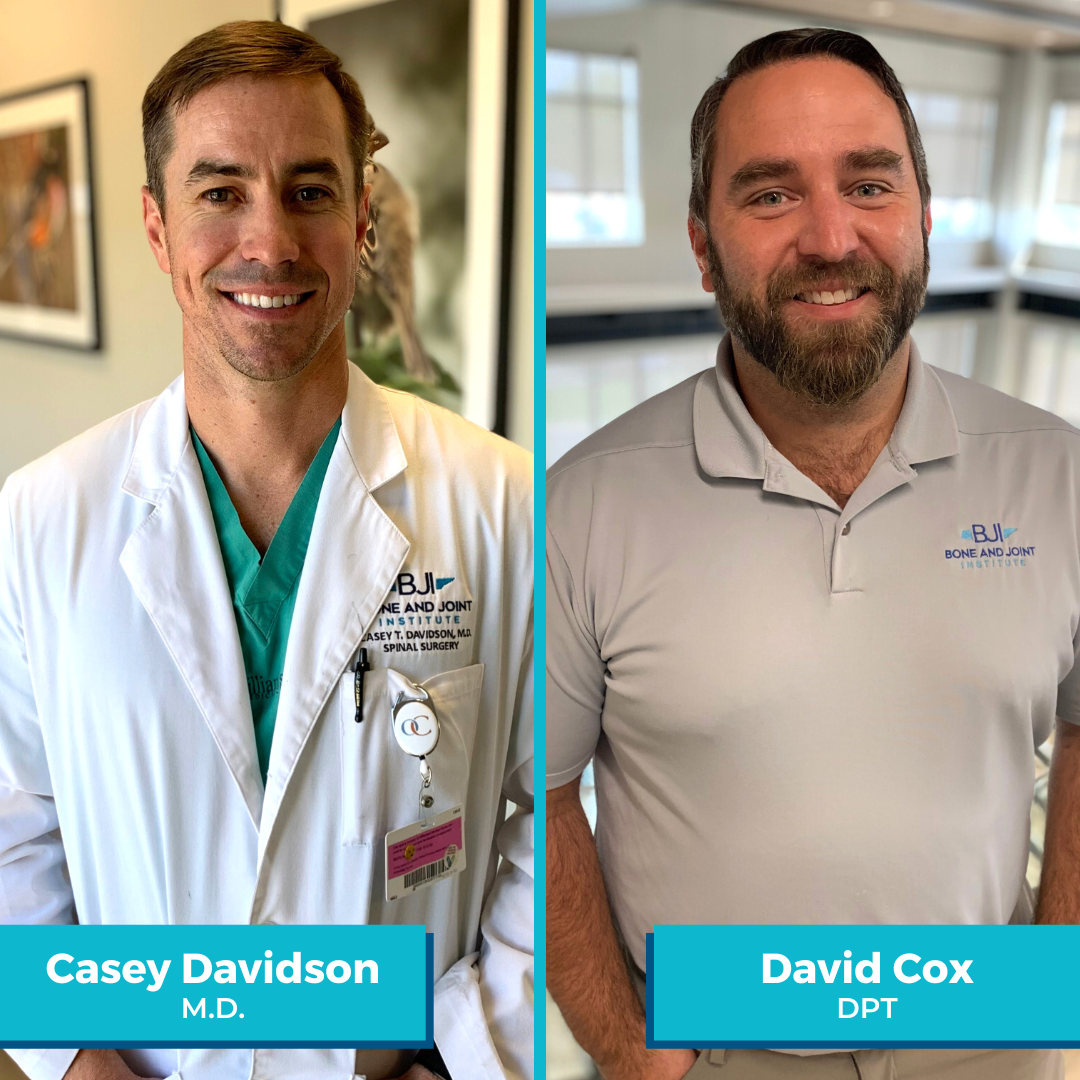
26 Sep Back To School Tips for Backpack Safety and Laptop Posture
Originally published in the Williamson Herald –
With summer coming to a close and school starting, students are quickly getting back into the classroom. In addition to the increased workload, students take on the physical weight of their backpacks, books and laptops. If mismanaged, these added strains can cause long-term back and shoulder injuries that linger well past grade school.
From the Bone and Joint Institute of Tennessee’s David Cox, DPT, and Casey Davidson, M.D., here are some best posture practices and tips to consider as they continue to grow and head off to school.
1. Get The Right Fit
Most backpacks are often too big and too heavy for the person carrying them, and regular school backpacks do not always have a secure waist strap. However, tightening the shoulder straps can alleviate added pressure. “The higher the better,” said Cox. “Wearing a backpack too low or too heavy can lead to injury.” Dr. Davidson also recommended that people with pre-existing back problems opt for a rolling backpack, and always avoid carrying a backpack with one strap (despite current fashion trends). “Putting the point of force in one spot can put a lot more stress on the back,” he says.
2. Pack Smarter, Not Harder
Believe it or not, the way you pack a backpack can influence your comfort level while carrying it. Both medical professionals suggest that parents encourage their children to pack strategically. “The heavier items should generally go closer to the body so that most of the weight is at the center of gravity,” says Cox. This keeps the child steadier while carrying the weight. Also, rather than carrying everything on their backs all day long, Dr. Davidson recommends students making frequent stops at their lockers to drop things off.
3. Raise It Up
As technology advances, children and adults are working more from laptops, tablets and phones. However, as Cox says, “Laptops were never meant to be used as permanent workstations.” The average size of a computer screen is only about 10-inches tall, making it almost impossible not to look down while typing; this curved position can be painful. “The biggest way to alleviate stress is to reposition everything up to a higher level, which can prevent some general problems,” says Dr. Davidson. Another way to improve everyday posture is to invest in an external keyboard and reposition your laptop so that the line of sight is raised.
4. Beware of Tech Neck!
In addition to causing back pain and discomfort, physicians are starting to notice long-term developmental issues in adolescents who spend extended periods of time looking down at their devices. Tech neck, according to Cox, can be attributed to bad posture associated with mobile technology use. The disease manifests as an extra bone growth at the base of undeveloped skulls in children and adolescents. This new finding can have negative implications on their long-term health and activity.
“Everyone is looking down toward a desk or a laptop or a device in your hand. When you do that, it puts a lot of stress on the neck muscles and the muscles of the upper back,” said Dr. Davidson. In an effort to reverse these effects, Cox suggests exercising in a way that strengthens the back and core.
5. Know The Signs
“It is important for children and parents to notice the signs of bad postural habits before they become injuries,” Dr. Davidson says. Kids and teens may experience more subtle symptoms than parents, though. “They might experience discomfort in the mid back, upper back or neck, causing them to shift positions frequently,” Dr. Davidson says. “They won’t necessarily say that they hurt because they’re not in a lot of pain, but they’re just uncomfortable.” Other symptoms may include not sleeping well at night or sleeping more during the day.
If these problems persist, make an appointment to see a physical therapist at Bone and Joint Institute of Tennessee for an evaluation. “You can get in with a physical therapist pretty routinely without a referral now,” Dr. Davidson says. “It rarely takes more than some physical therapy exercises and a little bit of guidance to really rectify the situation.”
Situated just off Interstate 65 in Franklin, Bone and Joint Institute offers state-of-the-art technology and a superior patient experience close to home. For more information, visit www.BoneAndJointTN.org.
David Cox, DPT, holds a doctorate in physical therapy as well as certifications in advanced vestibular rehabilitation and dry needling. He has one son and is active in the community, leading a running group in south Franklin each week.
Casey T. Davidson, M.D., specializes in orthopaedic spine surgery at Bone and Joint Institute of Tennessee. He completed his medical training at the University of Texas Medical Branch in Galveston as well as an orthopaedic surgery residency at the University of Mississippi Medical Center and fellowships in Bern, Switzerland, and Charlotte, N.C. He and his wife have three daughters, and enjoy traveling, live music concerts and outdoor activities.
